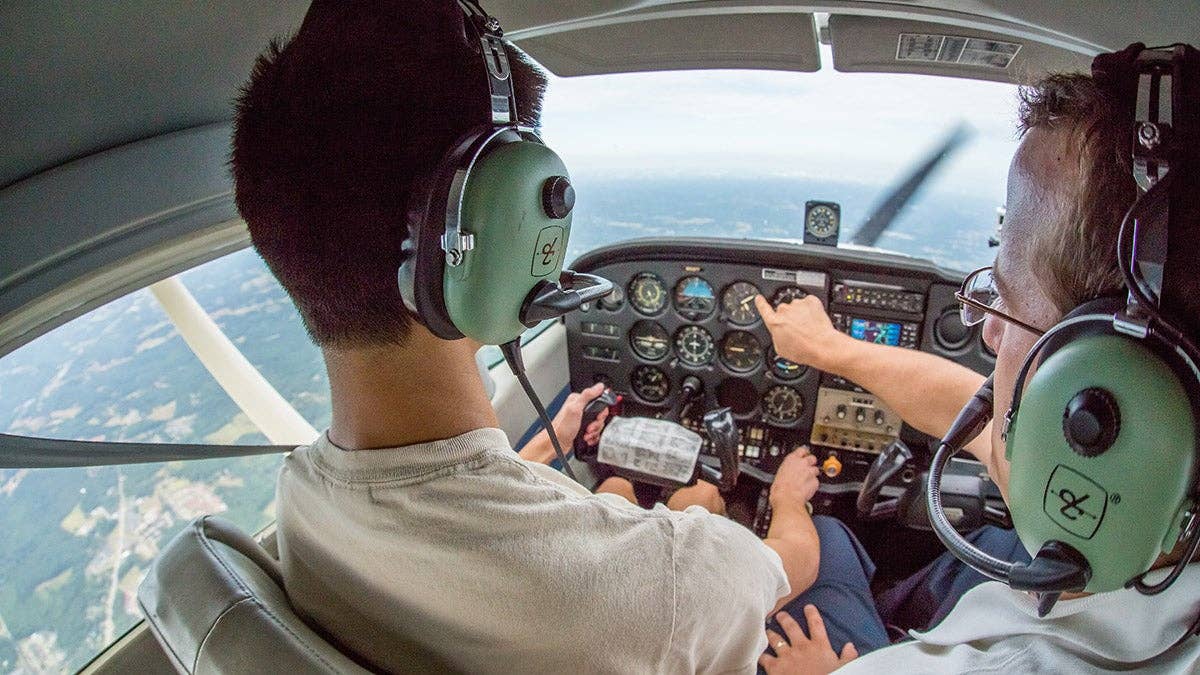Backyard Runways Are in Reach
You don’t have to be a millionaire to have a runway in the backyard. Plenty of pilots are living the dream on a grass strip built by someone else.

Mike Beckett, a private pilot and A&P technician, has been living and flying out of the Flying B since 2014. Credit: Bryan Painter
You don’t necessarily have to be a millionaire or build an airstrip of your own to have a runway in the backyard. There are plenty of pilots who are living the dream on a grass strip built by someone else.
Mike Beckett of Yelm, Washington, is one of these pilots. Beckett, a private pilot and A&P technician, has been living at the Flying B (8WA0) since 2014. The airport sports a 2,200- by 60-foot turf runway located approximately 19.6 miles southeast of Olympia Regional Airport (KOLM) as the Cessna flies. The runway, aligned 13/31, has a 400-foot overrun and power lines off the extended centerline.
The Flying B is an airpark, which means most of the homes there have airplane hangars attached to them. Beckett, who is now a 100-hour pilot, moved to the Flying B before he had his private pilot certificate, calling it a logistical advantage and cost-saving measure.
“I moved here to make owning an airplane more convenient and economical as far as paying for a hangar,” he said. “It doesn’t sound like it would be, because most pilots seem to equate living on a private runway as very expensive. However, not all airparks have million-dollar homes on them.
“Some more out-of-the-way airparks’ home values are similar in price comparison to homes in the surrounding area.”
Beckett said the financials penciled out for him when he realized that instead of paying for hangar rental for his aircraft, the hangar, which is part of his house, was covered in the mortgage payment.
A Team Effort
Beckett was a student pilot when he moved to the Flying B. One of the first life lessons he received was that there were days during the rainy season (let’s be real—that’s pretty much year-round for western Washington) when the runway was too soggy to use and no flying took place.
“I’m told by the original builder of the runway that tons of rocky fill was brought in to build it up so it would drain better. We have very little topsoil that sits on a clay base, and there is very little drainage fall from the runway to the surrounding road ditches, so the water has a tendency to hang around,” he explained.
The residents take turns performing airport maintenance like mowing and fertilizing the grass. In the winter when the snow falls, there is a tacit agreement among the homeowners that it is “use at your own risk.”
The airport is not open to the public—just to the 20 or so residents who live there—and occasionally to their invited guests.
Pilots who use the runway quickly learn to be sparing on the brakes, not because they will get stuck in the mud—the hard pan beneath the grass is more forgiving than most soft fields—but because the field grass is easily torn up, especially when it’s wet.
“When it is really wet in the winter, the drag from the grass will easily add about a 100 feet to your ground roll on takeoff in say a Cessna 100-series-type aircraft.
“It’s not a challenging airport, but it is only 2,200-feet long, so density altitude considerations should be taken into account for some low-powered aircraft,” Beckett said.
Beckett notes that sometimes they do get complaints from the non-aviation neighbors about aircraft noise. These are usually attributed to a pilot that has made a lower-than-normal approach or departure.
“Fortunately, those complaints come to us directly,” Beckett said. “We address these by figuring out who the pilot was and figuring out the what and the why of the low flight. Then we talk to the neighbor and address their concerns.
“Communication is key, and usually the complaint is simply the neighbor feeling unsafe. We really haven’t received any unreasonable complaints. Most of our neighbors think the airplanes and our runway [are] cool.”

Sign-up for newsletters & special offers!
Get the latest FLYING stories & special offers delivered directly to your inbox






